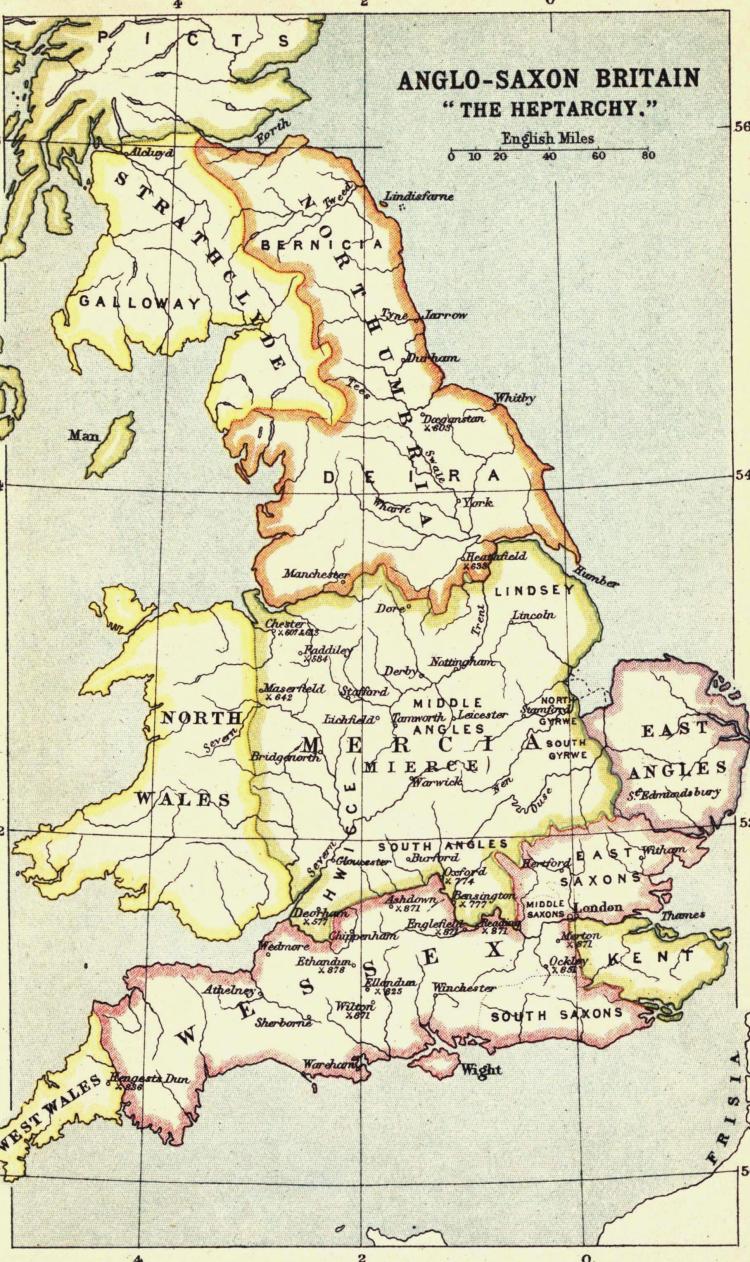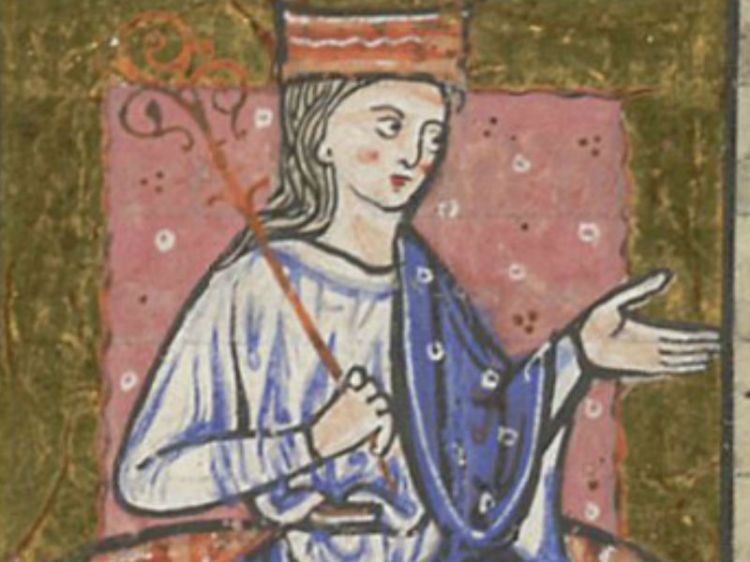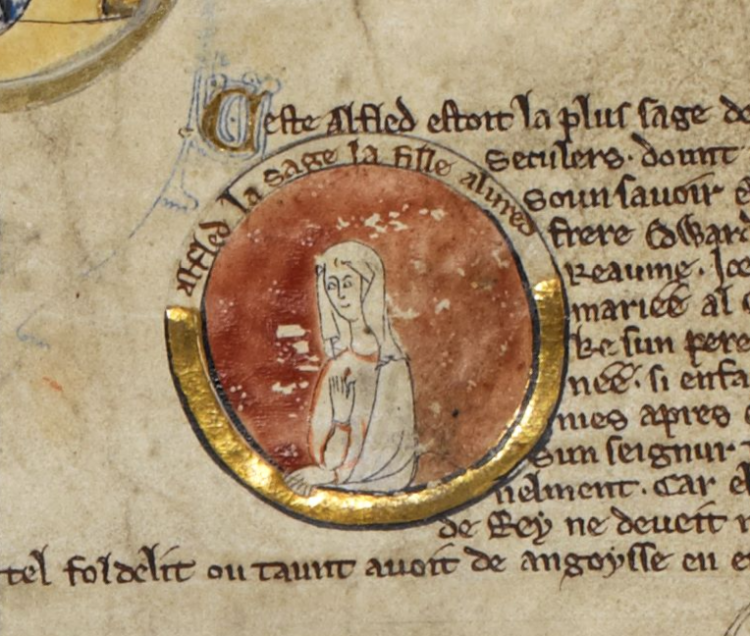Every now and then I like to write a post about one of the important and often overlooked women in history and British history in particular. Sometimes they appear in the most unexpected places such as the Wrestling Mongolian Princess Khutulun or a very Grace Darling who became a heroine around the world in Victorian times.
We have a long history of incredible and formidable women and one of the earliest though by no means the first was Æthelflaed – Lady of the Mercians. Whilst we all know it is 100 years since women won the right to vote here, it is also the 1,100 years since the death of a substantial Queen.

Æthelflaed was the eldest child of Alfred the Great, king of the West Saxons (reigned 871–899), and his wife Ealhswith. Ealhswith may have been related in turn to the royal house of the nearby kingdom of Mercia. Under pressure during the Viking invasions at the end of the 9th century, King Alfred made an alliance with Æthelred, Lord of the Mercians. Æthelflaed subsequently married Æthelred, strengthening this bond.
By the first years of the 10th century, Æthelred had become very ill. When he died in 911, Æthelflaed became the ruler of the Mercians in her own right. As lady of the Mercians (‘Myrcna hlæfdige’), Æthelflaed expanded her territories to the north, east and west. She fortified settlements, or burhs, and led her armies into Wales and Northumbria. In the final year of her life, the people of York even pledged to obey her ‘direction’ (‘rædenne’). It is possible that some of her military exploits were coordinated to help her brother, King Edward the Elder (reigned 899–924), but at other times Æthelflaed seems to have been acting independently.

Æthelflaed’s reign was unusual. Her successful political career did not necessarily reflect tolerant contemporary attitudes towards women, and (with one brief exception) she did not pave the way for future Anglo-Saxon female leaders. According to Asser, her father’s biographer, the West Saxon court where she grew up was particularly opposed to over-mighty queens: ‘The West Saxons do not allow a queen to sit beside the king, nor to be called a queen, but only the king’s wife [because of] a certain obstinate and malevolent queen [from Mercia], who did everything she could against her lord and whole people’
Æthelflaed must have been imbued with some incredible personal qualities as people didn’t rebel and pretenders to the throne didn’t chance their luck. All were happy to be led and ruled by this strong and woman.
It’s not clear if she ever fought in battle, it would be impossible to rule it out as fighting in battle was one of the key elements in the contract between the monarch and people; if the monarch can’t act with strength to defend your lives then why would the people be loyal to the crown? However, she was definitely present at the siege of Derby, where she lost thegns ‘who were dear to her’ and we can infer that it was she who oversaw the successful defence of Chester in 907, because we know that by this time her husband was incapacitated. In 917, an abbot of whom she was fond was murdered by the Welsh, and she led an army into Brycheiniog, attacking the fort on Llangorse Lake and taking many hostages. Clearly, this was not a lady to be messed with!
Even when she died, she was in the middle of negotiations with a deputation from the north, who had asked for her help against a fresh wave of invaders.
Really she deserves to be remembered along with other great Queens such as Boudicca and Elizabeth of England or across the Channel in France, Joan of Arc.

Sadly history barely remembers her, possibly because the main primary source for this period in our history is the Anglo-Saxon Chronicle. As this great work was commissioned by Alfred the Great and was written by monks of Wessex, they naturally had a bias towards the West Saxons. But she is at least remembered in the old capital of Mercia, Tamworth, where in 1918 they erected a statue of her.

Æthelflaed was initially succeeded by her daughter, Ælfwynn, whose reign was significantly shorter. The Mercian Register claims that just one year later, in 919, ‘the daughter of Æthelred, lord of the Mercians, was deprived of all authority in Mercia and taken into Wessex, three weeks before Christmas’. England would have to wait a few hundred years for another queen to rule unchallenged in her own right.
You have probably noticed this article gave me the unavoidable chance to use Æ which is an old Anglo-Saxon letter which comes from ancient Greece. If you’d like to know more about this largely forgotten digraph then check out my post The Ædifying use of Æ.
British Library exhibition is very good at the moment
LikeLiked by 1 person
Yes, have you been to see it? I went on Friday and I thought it was fantastic. Interestingly I saw the original book which I think this blog post refers to directly or indirectly about Æthelflaed. I aim to write a blog post on the exhibition. I found it a little overwhelming, so much to see; half I had never heard of and the other half I never imagined I would ever see with my own eyes.
LikeLiked by 1 person
yeah I saw it on saturday – will definitely go back. i look forward to reading your blog on it
LikeLiked by 1 person
An interesting and enlightening post!
LikeLiked by 2 people
Surprisingly, I ‘met’ this queen of Mercia in a novel. The Saxon Stories Series by Bernard Cornwell is seriously good reading, although I can’t speak to any kind of accuracy.
LikeLiked by 1 person
I haven’t read that novel but I know Bernard Cornwell is a prolific writer of historical fiction. I’m sure it must be a good read if nothing else!
LikeLike
Very informative, just watched last kingdom, I love that period, as my kin are from Derbyshire, and Somerset, they were land holders and lord’s , so thanks again, it was good!
LikeLiked by 1 person
I’m glad that you enjoyed it. It is my favourite period too, anything between the Romans and 1066. Somerset and Derbyshire have such histories and landscapes too. I have written a few other posts over the years on people or events from those times and also the medieval period too.
LikeLike